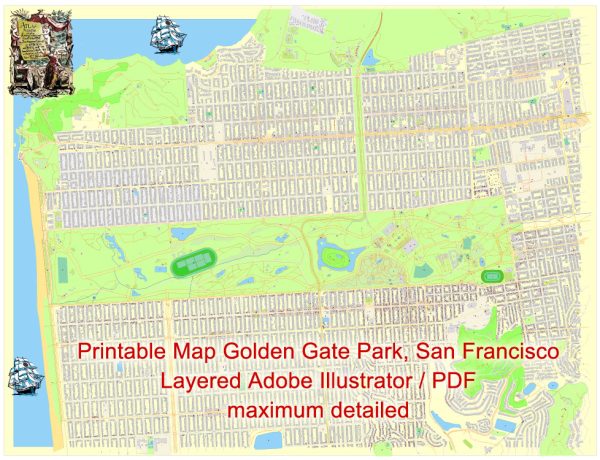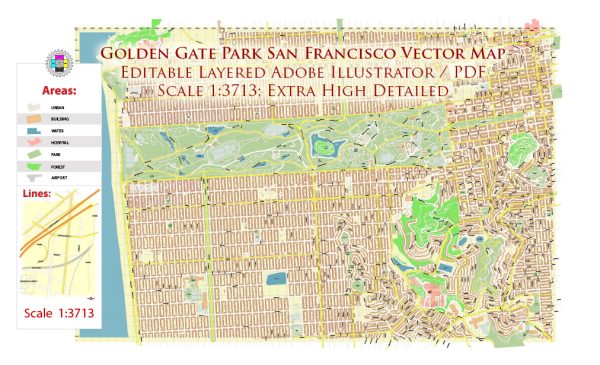Golden Gate Park, located in San Francisco, California, has a rich history of creation and development. It is one of the most iconic urban parks in the United States. Here’s a brief overview of the history of Golden Gate Park:
- Early Proposals: The idea for creating a large public park in San Francisco began in the mid-19th century. In 1868, a city engineer named William Hammond Hall proposed the creation of a park in the city’s undeveloped western areas. He envisioned a park that would rival the great parks of Europe, like London’s Hyde Park and Paris’s Bois de Boulogne.
- Land Acquisition: The city began acquiring land for the park in the late 1860s. The area selected for the park was initially sand dunes, scrubland, and rocky terrain. The name “Golden Gate Park” was chosen in reference to the Golden Gate Strait, the entrance to San Francisco Bay.
- Park Design: The design of Golden Gate Park was heavily influenced by Frederick Law Olmsted and Calvert Vaux, the famous landscape architects who designed New York City’s Central Park. They envisioned a park that incorporated natural elements, like lakes and meadows, with structured elements, such as paths and roads. The park was designed to offer a respite from the city’s urban hustle and bustle.
- Development: The park’s development involved significant engineering efforts to shape and transform the landscape. Thousands of trees and plants were imported and planted, and large areas were irrigated to create lush gardens and meadows. The Dutch Windmill, the Music Concourse, and Stow Lake were some of the early features of the park.
- Attractions and Amenities: Over the years, Golden Gate Park has been enhanced with numerous attractions and amenities. These include the California Academy of Sciences, the de Young Museum, the Japanese Tea Garden, the Conservatory of Flowers, and the San Francisco Botanical Garden. The park also features sports fields, playgrounds, and recreational areas.
- Cultural Significance: Golden Gate Park has been a central location for cultural and recreational events throughout its history. It has hosted music festivals, art exhibitions, and a variety of outdoor activities. The Summer of Love in 1967 brought national and international attention to the park as a hub of counterculture and music.
Today, Golden Gate Park covers over 1,000 acres and is a beloved destination for both locals and tourists. It continues to be a vital green space within San Francisco, offering a mix of natural beauty and cultural attractions, making it an integral part of the city’s history and identity.



 Author: Kirill Shrayber, Ph.D.
Author: Kirill Shrayber, Ph.D.